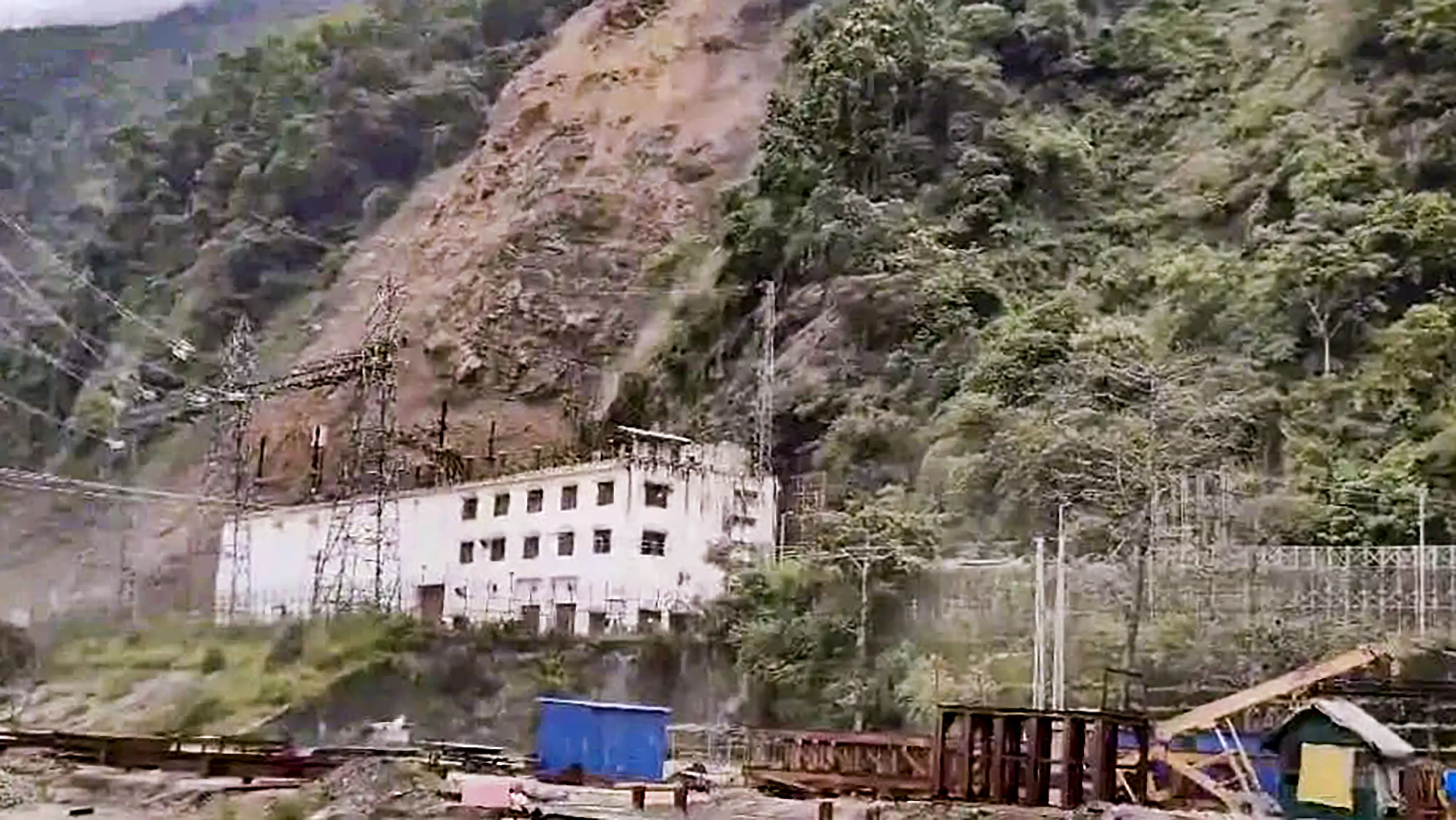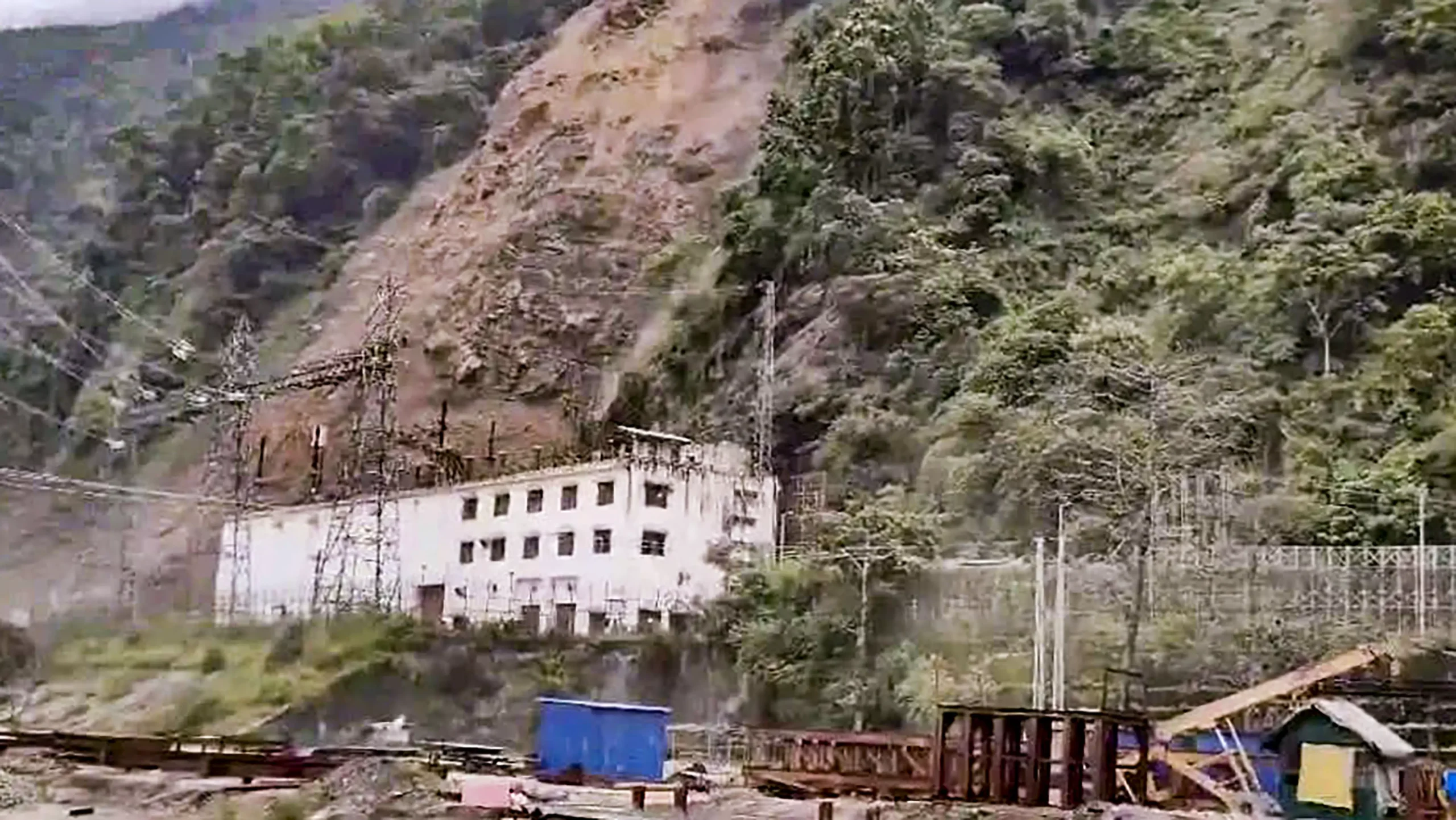
The planet is being churned; and wherever one looks, one sees natural and unnatural (mostly man-made) disasters.
It is not only the multiple landslides that occurred in six villages of Wayanad district of Kerala on July 30, but the entire Himalayan belt is disturbed.
In Wayanad, heavy rains triggered the collapse of hillsides, resulting in torrents of mud, water and boulders cascading down into the valley. Similarly in the Himalayas, particularly in Himachal Pradesh and Uttarakhand or Arunachal Pradesh, tragic incidents such as these are taking place.
In most of the cases, wild development activities have resulted in these mishaps. For example, in Himachal Pradesh, some environmental activists told the Down To Earth magazine that “most incidents of natural disasters that occurred in Himachal Pradesh during the last one year happened around some power (dams) or national highway project”.
In Uttarakhand, wild construction, not taking into account the capacity of the mountains to sustain new roads, new hotels and millions of tourists, has been one of the factors triggering one tragedy after another.
One basic fact has been forgotten: that mountains are fragile.
Flying over the Himalayan range, one has the impression that the snow-covered ranges and high peaks are massive and seemingly-impenetrable mountains; however, on the ground, the Himalayas are in grave danger.
For millennia the Himalayan passes have been criss-crossed by adventurers, pilgrims, traders, monks or holy men looking for a mythic paradise upon earth, or simply good business; however, through all that time the environment was not disturbed.
Another factor has to be taken into consideration is the militarisation of the Himalayan range, and for this India cannot be held responsible.
The finger must be pointed clearly at our northern neighbour.
For centuries, life went on as usual, but in 1950 the troops of China’s People’s Liberation Army (PLA) marched into Tibet. The military balance of the peaceful plateau as well as the ecological equilibrium quickly started to change.
During the following years, thousands of Tibetans managed to escape their colonised land and take refuge to India; it included the Dalai Lama, Tibet’s religious and temporal leader, who arrived in India in 1959.
Then came October 1962, when Chinese troops attacked India on the Himalayan slopes; from the arid Ladakh region in the west to the dense forests in the north-west, the PLA marched into Indian territory. The conflict was short, just one month, but violent. More than 60 years after the event, it is still deeply engraved in the Indian psyche.
It had incalculable consequences for the mountains and though the passes were closed, trade and pilgrimage routes stopped and communications were cut between northern India and the Tibetan plateau. India now had a bully instead of a friend as a neighbour.
At the beginning, very few worried about the environment and even less about climate change. But the Chinese occupation slowly started to have disastrous consequences for the Himalayan ecology.
Today, it is not only India who is under threat of the Chinese “salami tactics” (taking over a few kilometres of territory at a time).
On August 23, 2023, China released a new “standard map”. The map included Taiwan and parts of the maritime zones of the Philippines, Vietnam, Brunei, Indonesia, and Malaysia. It added the tenth dash to its existing nine-dash line claim in the South China Sea… and of course Arunachal Pradesh and the Aksai Chin area.
Interestingly, the map included the small Bolshoy Ussuriysky island, though in 2005, Russia and China had agreed that the island would be split in half and the border would run in its centre.
On May 17, 2024, the South China Morning Post in an opinion piece said that “China must act fast to reclaim ‘lost territories’ from Russia”. A hundred years ago, a treaty between the then USSR and China had abolished the so-called Czarist unequal treaties, it noted, and said: “Now, with Russian President Vladimir Putin bogged down in the Ukraine war, it may be the best time for Beijing.”
Another recent example of Chinese aggressiveness, from August 2 to 4, some Japanese fighter planes had to scramble to cope with a intrusion into Japanese airspace over the Sea of Okhotsk, the Sea of Japan, the East China Sea and the Pacific Ocean.
Examples could be multiplied. India, like several other countries, has no alternative but to defend itself.
As a result, the Himalayas have become one of the most militarised regions in the world. Despite several bilateral agreements between India and China, in May 2020, China started practicing “salami” slicing in five different areas of Ladakh, the high plateau in north-western India.
Why open new fronts in that arid mountain desert?
Many believe that one general, in search of promotion, had suggested some “small” operation to President Xi Jinping. These few kilometres here and there would give strategic depth to the PLA.
India reacted swiftly, at the cost of spending four winters at 15,000 feet, often with temperatures at minus 40 degrees Celsius.
Each army has today between 60,000 and 70,000 troops posted at the Line of Actual Control (LAC). China and India then began to frenetically develop the infrastructure on their respective sides. The immediate collateral damage was to the environment; this is compounded by climate change and wild tourism development.
On July 25, India’s external affairs minister S. Jaishankar met China’s foreign minister Wang Yi. Mr Jaishankar underlined the need for “full respect” of the LAC; ultimately, both sides agreed on giving “strong guidance for disengagement”. It is, however, doubtful that it will translate in troops reduction on the ground.
The degradation of the Himalayan environment is obviously due to several other factors too, but the militarisation triggered by China’s hegemonic tendencies has brought incalculable harm to the fragile eco-system.
A solution had been proposed by the Dalai Lama in 1989 in his Five-Point Peace Plan: the whole of Tibet, including the eastern provinces of Kham and Amdo, should be transformed into a zone of “Ahimsa”, meaning a state of peace and non-violence.
Unfortunately, this dream seems much more distant today than 35 years ago; when the Dalai Lama had explained: “The establishment of a peace zone in Tibet would require the withdrawal of Chinese troops and military installations from the country, which would enable India also to withdraw troops and military installations from the Himalayan regions bordering Tibet.”
A “Zone of Ahimsa” would be a great boon for the Himalayan environment, but for the time being, it may remain a dream.
